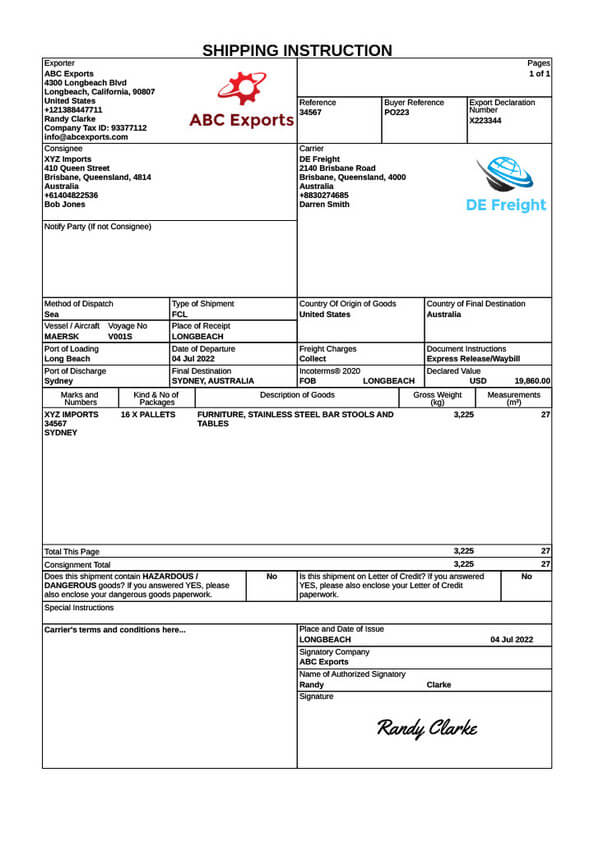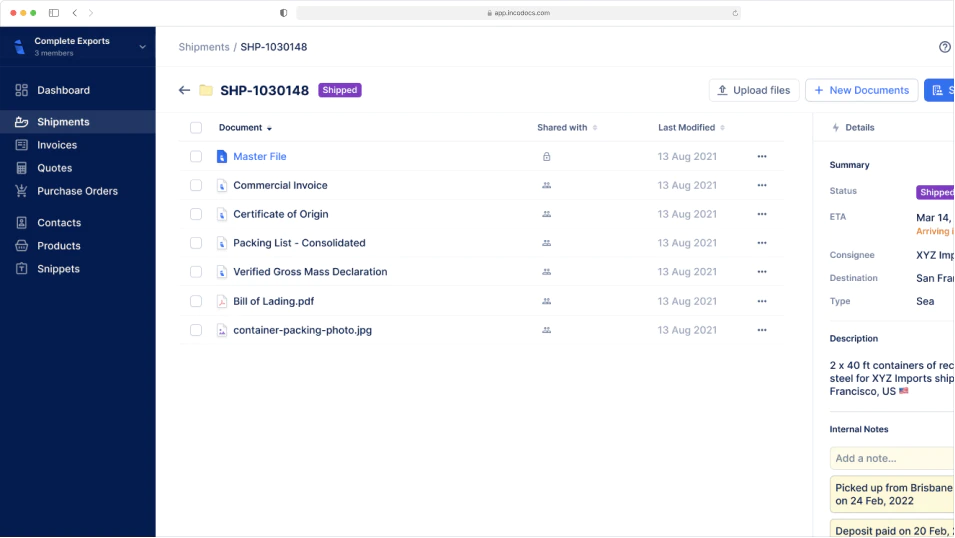IncoDocs raises $1.2M seed round led by Maersk GrowthRead the announcement

Shipping Instruction Template
What is a Shipping Instruction used for?
A Shipping Instruction is similar in purpose to a Shipper’s Letter of Instruction or Forwarding Instructions but is used when the shipper is dealing directly with a carrier/shipping line. The document provides details on the parties involved, the cargo being shipped, and any specific requirements for its transportation. The information on this document will then be used by the carrier to prepare the Bill of Lading. It is therefore important to ensure all details are accurate to avoid any critical issues or delays.
How to create a Shipping Instruction
Open IncoDocs
Open IncoDocs in your browser and navigate to the “Export Docs” section.
Choose the Shipping Instruction template
Click on 'New document set' and select the Shipping Instruction template along with any other export documents you wish to create.
Fill out & customize your doc
Fill out the document, customize template fields to your needs and add your company letterhead. To save time and prevent re-entry errors, enter key shipment data into the Master File to have it sync across all other documents in your set automatically.
Sign & seal
Click on the signature box at the bottom of your document to create and place a digital signature then hit “Save & Quit”. On the document preview screen, click on the ‘More’ dropdown button and select “Add company seal” to place a digital stamp.
Download or share
Download or share documents from IncoDocs in 1-click. Documents can be downloaded as PDF or CSV which can be imported into other systems without manual re-entry.
Your questions, answered.
What information is included on a Shipping Instruction Document?
Free to start,
Easy to use.
Setup in 5 mins.
